Should the Ashland Avenue bridge in Green Bay be rebuilt or lowered? WisDOT plans fall public meetings
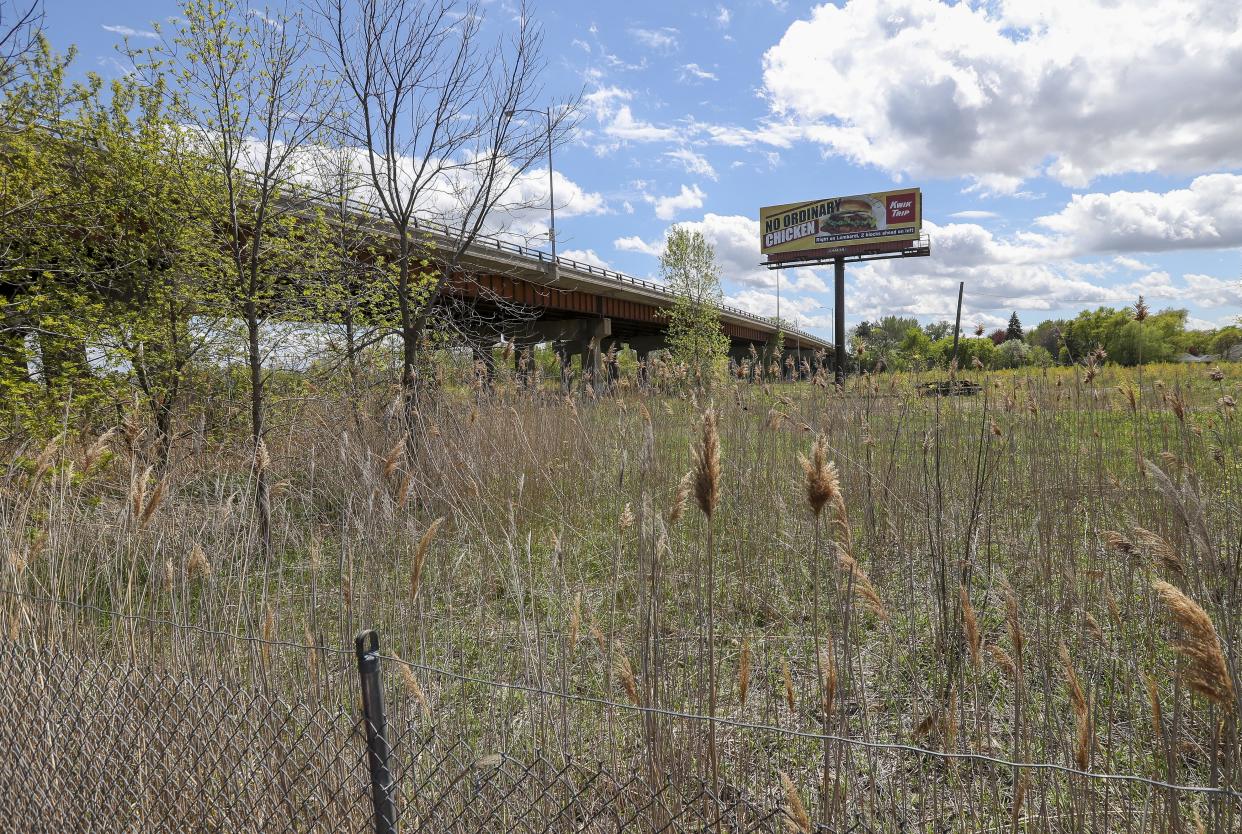
GREEN BAY - The Wisconsin Department of Transportation wants to hear from you this fall about how to reconstruct the Ashland Avenue bridge in 2031.
WisDOT plans to host several public project kickoff meetings in October or November as it studies how to replace the four-lane viaduct over a 33-acre property owned by Canadian National. The state wants to gather input from residents, motorists, business owners, property owners and neighborhood stakeholders as it weighs options to rebuild the section of Ashland, also known as State 32, between Ninth Street and the Mason Street overpass.
The Ashland viaduct will be 76 years old when work is currently slated to start. At this point, it has outlasted its original purpose: To let traffic bypass a functioning rail yard.
The rail site now sites empty, idle for the last decade. Drivers and pedestrians now bypass an expanse of brush and weeds where railroad tracks, a roundhouse, and other commercial buildings that date back to the 1880s used to be.
City officials and staff have already started to contemplate the impact the once-in-a-century reconstruction project could have on the west side, especially in concert with other road construction plans and redevelopment projects. And they've turned their attention to empty rail yard below Ashland Avenue, too.
One option sure to get some attention would be to remove the overpass and reconstruct Ashland Avenue “at grade,” or at ground level. The technical term in this case would be to "remove the grade separation" between Ashland and the existing street network below it, according to Steve Grenier, Green Bay's director of Public Works.
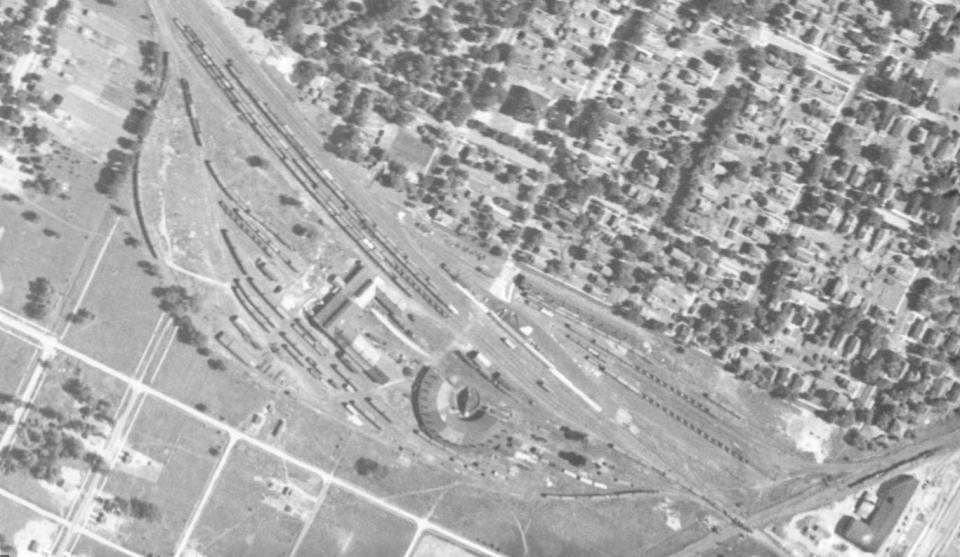
How we got here: Historic rail yard use ended after more than 100 years. Green Bay added site onto tax rolls 5 years ago
CN’s rail yard has been a part of Green Bay’s west side for at least 135 years, according to Brown County historic maps and photos.
Brown County plat maps from 1889 indicate the property is the Milwaukee and Northern Railroad yards. The plat map included a roundhouse, an L-shaped building, and many rail lines for storing shipping cars.
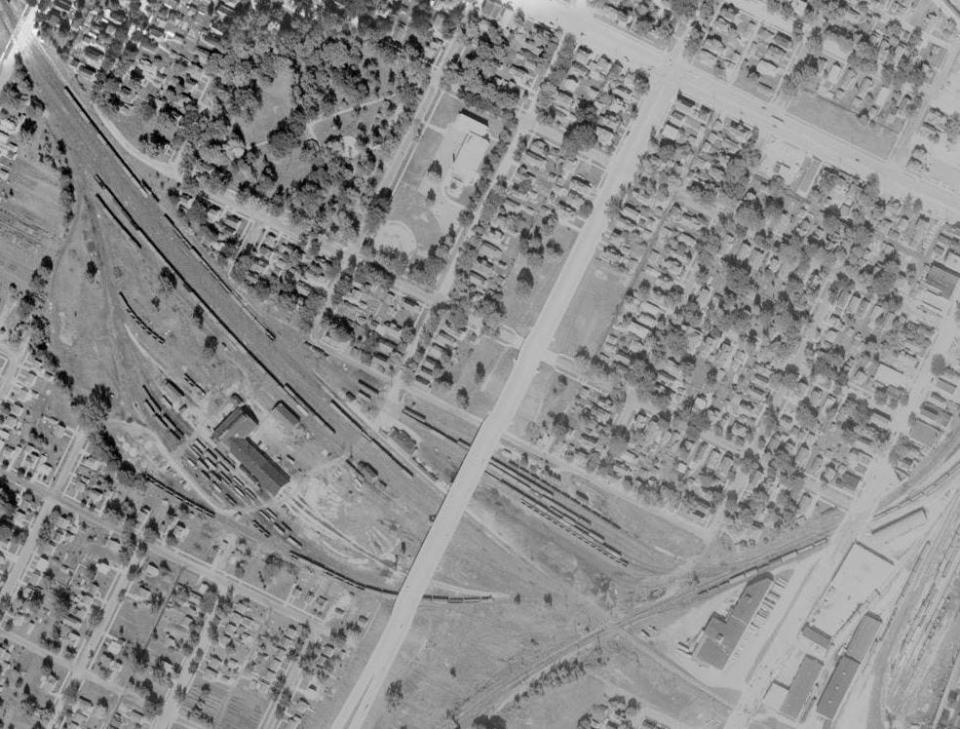
The Ashland Avenue overpass we know today was constructed over the rail yard’s eastern end in 1955. Around the same time, between 1948 and 1960, the yard’s roundhouse was demolished. The L-shaped building was demolished in the 1990s, though you can still see its footprint on satellite images.
The site saw diminished use into the 2010s, until 2013 when CN removed the rail lines from the site, idling it. Currently, CN lists the yard as a “rail development site.”
The properties were tax-exempt until the city added them back onto the tax rolls in 2019. The three parcels currently have a combined assessed value of $1.8 million.
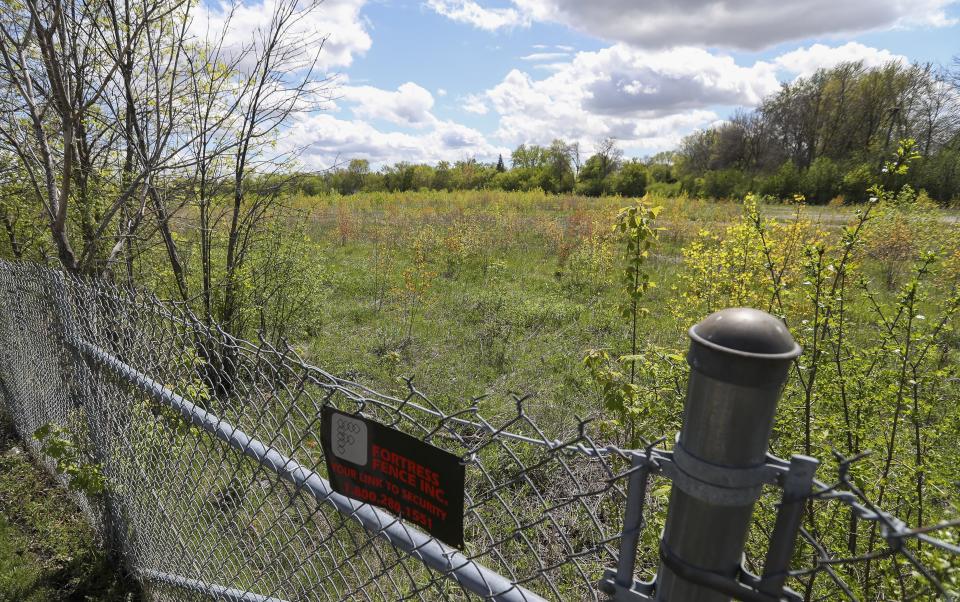
CN: Rail yard not for sale; Green Bay still wants to talk
The Green Bay City Council in March hired a law firm that specializes in engaging railroads to help the city “progress conversations on the acquisition of the abandoned rail yard,” the council resolution read. Green Bay City Council member Brian Johnson, whose district includes the Ashland Avenue bridge and rail yard site, introduced the request. He also said its time for the Ashland Avenue viaduct to come down to grade.
“That site has been idle for years. It’s sat idle for that long, it’s time to have a conversation,” Johnson said. “Right now is the opportunity, given what’s currently happening with the Ashland Avenue viaduct.”
CN sent the following statement to the Press-Gazette in response to an interview request: "CN has met with city and is aware of their interest in the property. Unfortunately, it is not for sale."
Johnson said the city still needs to understand CN’s future plans for the 33-acre property since it could have a major influence on WisDOT’s construction plans and the future development of Green Bay's west side.
“The reality is there’s never been a lot of motivation for the railroad to communicate with us,” Johnson said. “We’re not looking for an adversarial dialogue here. We’re looking for folks who know how to talk to the right people to expedite this discussion."
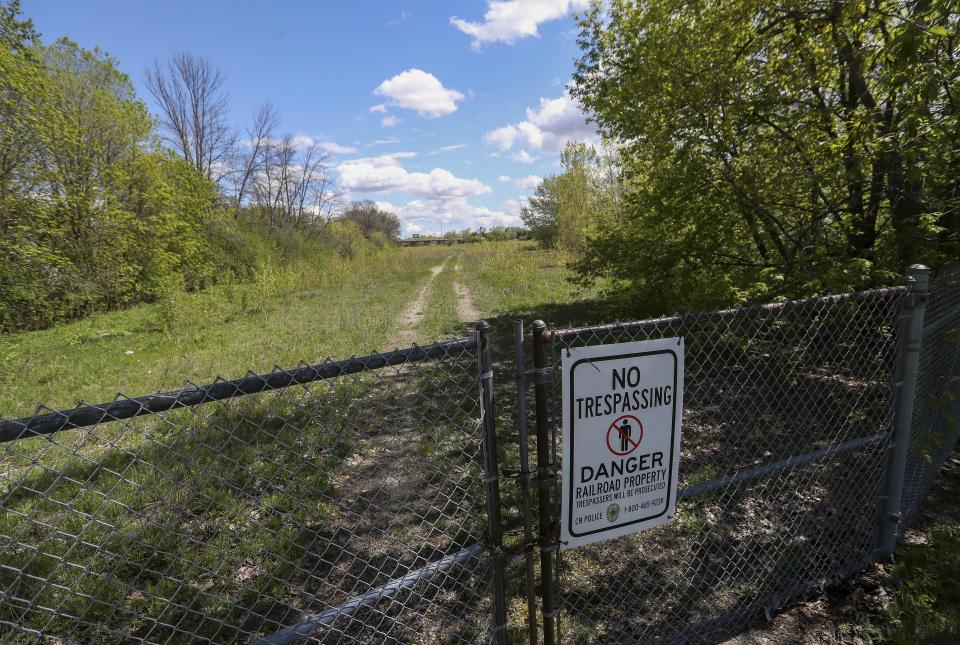
Ashland Avenue viaduct replacement projected to cost $11 million
Green Bay Public Works officials have inquired about the condition of the viaduct since 2012. Ashland Avenue is a state highway, but the city is responsible for its maintenance and upkeep. WisDOT recently completed a condition assessment and determined the viaduct cannot be repaired again and needs to be replaced.
Grenier said the Public Works Department would support the removal of grade separation between Ashland Avenue and the street grid below "if there isn't a true need for it any longer." He said that from a maintenance standpoint, bridge spans require additional staff time and maintenance compared to an at-grade road.
"We'd support bringing Ashland Avenue back down to ground level," Grenier said. "It provides better connectivity and an opportunity for redevelopment of the CN rail yards on either side of the roadway."
An Ashland Avenue connected into the existing street grid could intersect with Fifth and Sixth streets north of the rail yard. South of the rail yard, an at-grade street could connect into Seventh and Eighth streets, too, both of which currently terminate at the base of the Ashland Avenue bridge. It could also improve traffic flow north of the bridge, which drops northbound traffic right into an intersection with Third Street and the major intersection with West Mason Street.
The Green Bay City Council on June 25 approved a revised state-municipal financing agreement between WisDOT and the city regarding the bridge/viaduct replacement project. The revised financing agreement puts the projected total project cost at $11 million with the city to pay for about $513,000 of the engineering costs.
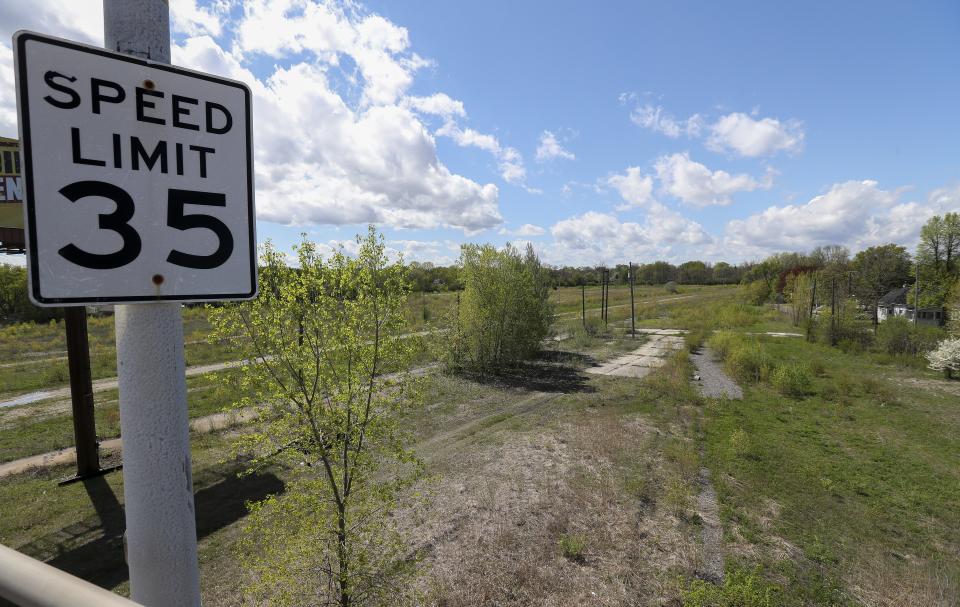
What's your idea for the Ashland Avenue viaduct? WisDOT wants to hear from you at fall meetings
Right now, WisDOT does not have any preferred plan, approach or idea for how to reconstruct this segment of Ashland Avenue, WisDOT spokesperson Mark Kantola said.
The department's fall public meetings and the input people provide during them will help planners and engineers decide what design the state picks for the new Ashland Avenue. The department wants to hear from nearby residents, motorists, property owners, businesses and others. Kantola said the department will soon finalize the date and location for the fall public kickoff meetings and that the public can expect an event similar to the Mason Street bridge reconstruction kickoff meeting held in November.
At the fall meeting, project managers will provide an introduction to the study, the scope of the road project, the timeline and offer attendees the chance to provide their preliminary input on how the road should be reconstructed, what bicycle and pedestrian amenities to include, how to address speeding concerns and the merge conditions the current Ashland viaduct and Mason Street bridge create for traffic.
"We need a lot of opinions on the impacts," Kantola said. "The people who use this area all the time will provide us a lot of key information."
Ashland Avenue viaduct, Mason Street bridge, Shipyard, and coal piles plans will change Green Bay's west side, even without CN rail yard
Even if the city does not make headway with CN on the rail yard properties, the reconstruction of Ashland only adds to the dramatic changes Green Bay's west side could see in the next decade.
Green Bay is developing new recreational amenities and spaces to complement private development of housing and commercial spaces. Road and bridge reconstruction projects could enhance connections between neighborhoods and reconnect street grids, perhaps even open up additional land for new development.
New Mason Street bridge: WisDOT plans to reconstruct or replace the Mason Street lift bridge, formally known as the Donald A. Tilleman Bridge, in 2032. One option under consideration is lowering the bridge's height to near ground level, which could open up road and street networks from Webster Avenue on the east side to 12th Avenue on the west side. The next public information meeting on the Mason Street bridge reconstruction is tentatively scheduled for the last week of September at the Neville Public Museum, Kantola said.
Ashland Avenue reconstruction: The Ashland Avenue viaduct project in 2031 could bring the viaduct down to grade and connect into some of the existing street grid currently beneath it. WisDOT also plans to resurface a segment of Ashland Avenue south of the viaduct to Lombardi Avenue in a separate project.
The Shipyard Redevelopment Area's activation: Located north of the Mason Street bridge, the Shipyard Redevelopment Area this year will see the first phase of public improvements completed and construction start on the first 109 units of a 225-unit riverfront apartment development. The city also is in discussions with a housing developer about building a new Green Bay Metro Fire station and housing on another blighted industrial site on South Broadway.
Coal piles relocation: Just south of the Mason Street bridge, Brown County, Green Bay and C. Reiss Coal Co. officials continue to press ahead with efforts to build a new Port of Green Bay terminal at the mouth of the Fox River and relocate the coal piles out of Green Bay's central city.
“The Mason Street bridge, the Shipyard redevelopment, the coal piles, the rail yard redevelopment. These things are huge, but take decades," Johnson said.
Contact Jeff Bollier at (920) 431-8387 or jbollier@gannett.com. Follow him on Twitter at @JeffBollier.
This article originally appeared on Green Bay Press-Gazette: Ashland Avenue bridge project could reshape Green Bay's west side

